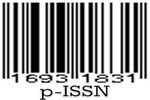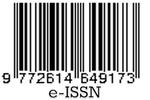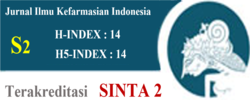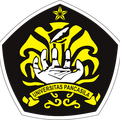Potency of Turmeric Rhizome Extract as Prebiotic Agent for Lactobacillus plantarum Growth Promoter In Vitro
Abstract
Turmeric contains curcumin which has antibacterial and anti-inflammatory activities. In addition, turmeric contain also carbohydrates that has potency as a prebiotic agent. Research on turmeric extract that was obtained by maceration in variety of solvent, temperatures and time have been carried out to get the most potent prebiotic extract of turmeric to stimulate L. plantarum growth. Maceration with water at 28oC for 1 hour resulted in extract which can enhance the growth of L. plantarum approximately is higher than controls at a concentration of 1 ppm. L. plantarum growth rate increases with increasing concentration of extract. Sugars content of oligosaccharide in the extract were stakiosa, sucrose and lactose of 3014, 164, and 82 ppm respectively. It is concluded that oligosaccharide in turmeric extract is potential as prebiotic agent to increase L. plantarum growth.
References
2. Chattopadhyay I, Biswas K, Bandyopadhyay U, Banerjee KR. Turmeric and curcumin: Biological actions and medicinal applications. Journal Current Science. 2004. 87:44-53.
3. Kusumawati I dan Zaini.NC. Pengaruh Senyawa prebiotik dari bawang merah (Allium cepa) terhadap pertumbuhan bakteri probiotik. Majalah Farmasi Airlangga. 2005. 5:20-5.
4. Thammarutwasik P, et al. Prebiotics: A review. Songklanakarin Journal of Science and Technology. 2009. 31:401-8.
5. Wang, Y. Prebiotics: Present and future in food science and technology. Food Research International. 2009. 42:8-12.
6. Wichienchot S, Jatupornpipat M, Rastall RA. Oligosaccharides of Pitaya (dragon fruit) Flesh and their prebiotic properties. Food Chemistry. 2010. 120:850-7.
7. Triana E, Yulianto E, Nurhidayati N. Uji viabilitas Lactobacillus sp. Mar 8 terenkapsulasi. Jurnal Biodiversitas. 2006. 7:114-7.
8. Zainuddin,A, Wasito EB, Puspaningsih NTT. Pengujian in vitro xilooligosakarida sebagai kandidat prebiotik. Jurnal Berkala Penelitian Hayati. 2008. 14:101-11.
9. Jenie SL dan Rini SE. Aktivitas antimikroba dari beberapa spesies Lactobacillus terhadap mikroba patogen dan perusak makanan. Buletin Teknologi dan Industri Pangan. 1995. 7:46-51.
10. Ratnakomala S, Ridwan R,.Kartina G, Widyastuti Y. Pengaruh inokulum Lactobacillus plantarum 1A-2 dan 1Bl-2 terhadap kualitas silase rumput gajah (Pennisetum purpureum). Biodiversitas. 2006. 7:131-4.
11. Molin G. Probiotics in foods not containing milk or milk constituents, with special reference to Lactobacillus plantarum 299v1–3. Am J Clin Nutr 2001. 73(suppl):380S–5S.
12. Çıkrıkçı CE, Mozioglu, Yılmaz H. Biological activity of curcuminoids iIsolated from Curcuma Longa. Rec Natural Production. 2008. 2:19-24.
13. Robertson J, et al. Structural properties of diet-derived polysaccharides and their influence on butyrate production during fermentation. British Journal of Nutritio. 81:219-23.
14. Dubois M, Gilles KA., Hamilton JK, Rebers PA, Smith F. calorimetric method for determination of sugars and related substances. Analytical Chemistry. 1956. 28:350-6.
15. Panneerselvam R and Abdul-Jaleel C. Starch and sugar conversion in Dioscorea esculenta tubers and Curcuma longa rhizomes during storage. Caspian J. Env. Sci 2008. 6:151-60.
16. Jaju SB, et al. Galango flavonoid isolated from rhizome of Alpinia galanga (L) Sw (Zingiberaceae). Tropical Journal of Pharmaceutical Research. 2009. 8:545-50.
17. Joe BM, Vijaykumar, Lokesh BR. Biological properties of Curcumin-cellular and molecular mechanisms of action. Critical Reviews in Food Science and Nutrition. 2004. 44:97–111.
18. Han IH, Baik BK. Oligosaccharide content and composition of legumes and their reduction by soaking, cooking, ultrasound, and high hydrostatic pressure. Cereal Chemistry. 2006. 83:428-33.
19. Criststafaro E, Mottu F, Wuhr MJJ . Sugars in Nutrition. New York: Academic Press; 1974. 231.
20. Jean A, Pennington P, Douglass JS, Spungen JD. Food values of portions commonly used. 18th Ed. Philadelphia: Bowes and Church; 2005.
21. Pinthong R, Macrae R, Rothwell JO. The development of soy based yogurt. J. Food Technol. 1980. 15:647- 67.
22. McLeod AM, Zagore MC, Champomier-Verges, Naterstad K, Axelsson L. Primary metabolism in Lactobacillus sakei food isolates by proteomic analysis. BMC Microbiology 2010. 10:1-10.
23. Keindler O, Weiss N. Regular, Nonsporing Gram Positive Rods. In: Sneath PHA, Mair NS, Sharpe ME, Holt JG [editors]. Bergeys manual of systemic bacteriology. Baltimere: William dan Wilkins; 1986. 1208-34.
24. Sumarna. Changes of raffinose and stachyose in soy milk fermentation by Lactic Acid bacteria from local fermented foods of Indonesian. Mal. J. Microbiol. 2008. 4(2).26-34.
Licencing
All articles in Jurnal Ilmu Kefarmasian Indonesia are an open-access article, distributed under the terms of the Creative Commons Attribution-NonCommercial-ShareAlike 4.0 International License which permits unrestricted non-commercial used, distribution and reproduction in any medium.
This licence applies to Author(s) and Public Reader means that the users mays :
- SHARE:
copy and redistribute the article in any medium or format - ADAPT:
remix, transform, and build upon the article (eg.: to produce a new research work and, possibly, a new publication) - ALIKE:
If you remix, transform, or build upon the article, you must distribute your contributions under the same license as the original. - NO ADDITIONAL RESTRICTIONS:
You may not apply legal terms or technological measures that legally restrict others from doing anything the license permits.
It does however mean that when you use it you must:
- ATTRIBUTION: You must give appropriate credit to both the Author(s) and the journal, provide a link to the license, and indicate if changes were made. You may do so in any reasonable manner, but not in any way that suggests the licensor endorses you or your use.
You may not:
- NONCOMMERCIAL: You may not use the article for commercial purposes.
This work is licensed under a Creative Commons Attribution-NonCommercial-ShareAlike 4.0 International License.

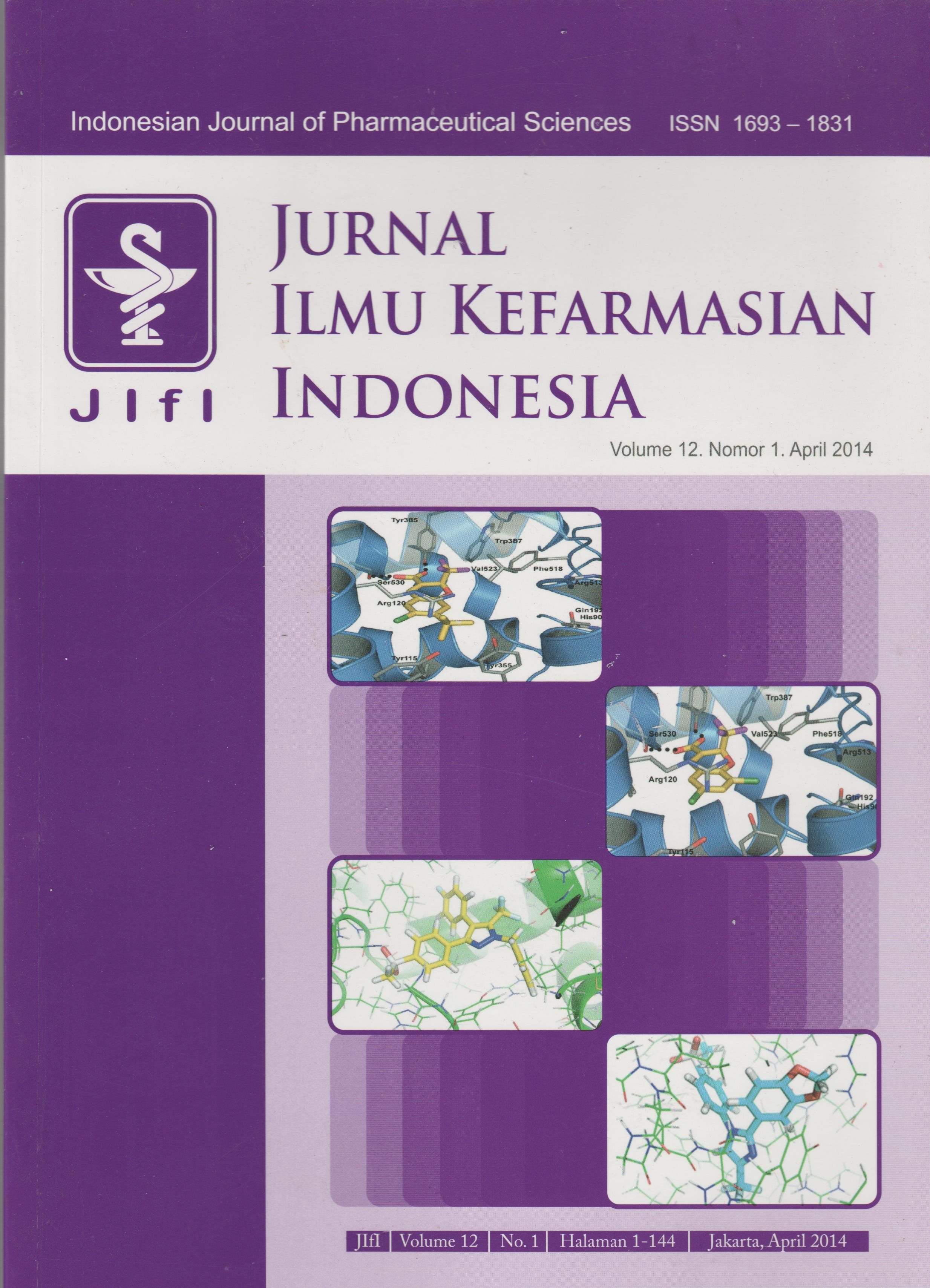



 Tools
Tools

